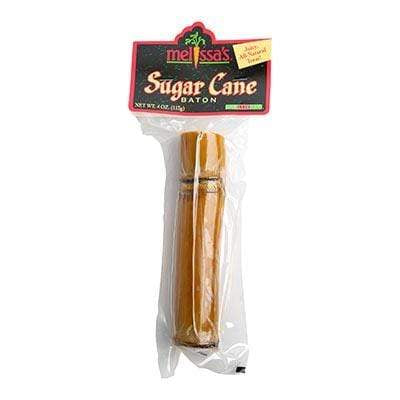Why Cane Sugar Processing Chemicals Are Crucial for Modern Sugar Refining
The function of walking cane sugar processing chemicals in modern-day sugar refining can not be overstated, as they are important to enhancing both the performance of removal and the general top quality of the end product. Agents such as phosphoric acid and certain flocculants are used to get rid of pollutants, causing sugar that not just meets consumer assumptions however additionally adheres to industry requirements. Nonetheless, the implications of these chemicals extend beyond high quality, discussing market characteristics and environmental considerations. This elevates vital questions about the sustainability of such methods and their effect on the future of sugar manufacturing.
Duty of Handling Chemicals
The effectiveness of cane sugar processing pivots substantially on the tactical application of processing chemicals. These chemicals play a critical function in boosting the performance and top quality of sugar removal and refining. From the initial stages of juice removal to the last purification actions, processing chemicals promote numerous important procedures.
In the extraction phase, chemicals such as phosphoric acid and calcium hydroxide are employed to maximize the explanation process, helping to eliminate impurities and suspended solids from the walking cane juice. This not only boosts the return yet likewise makes certain the clarity of the final item. Furthermore, agents like flocculants help in the quick settling of impurities, thus streamlining the total procedure.
As the handling advances, chemicals are made use of in decolorization and formation stages. Triggered carbon and ion exchange materials serve to eliminate shade and odor, making certain that the refined sugar meets consumer quality standards. Eventually, the role of handling chemicals expands beyond functional efficiency; they substantially impact the sensory qualities of the last item, adding to market competitiveness. Therefore, the meticulous option and application of these chemicals are crucial for accomplishing optimal end results in walking cane sugar processing.
Secret Kinds of Chemicals
Cane sugar processing relies upon a selection of essential chemicals that assist in each stage of manufacturing. These chemicals play vital roles in making clear, bleaching, and detoxifying the sugar removed from walking stick.
One main category of chemicals includes flocculants, such as polyacrylamide, which aid in the clarification process by promoting the gathering and settling of pollutants. In addition, calcium hydroxide is commonly used to reduce the effects of level of acidity and aid in the elimination of non-sugar components.
Lightening agents, such as turned on carbon and sulfur dioxide, are used to decolorize the syrup, leading to a more clear last product. These chemicals assist eliminate shade compounds that might affect the sugar's look and marketability.
In addition, phosphoric acid acts as a pH regulator throughout the processing stages, guaranteeing optimal problems for the enzymatic activities included in sugar extraction and purification.
Other essential representatives include edta (ethylenediaminetetraacetic acid), which chelates steel ions that could militarize unfavorable reactions, and salt hydroxide, which helps in pH control throughout the refining process. Jointly, these chemicals enhance efficiency and guarantee a high-grade walking cane sugar product.
Benefits for Sugar Top Quality
Commonly ignored, using specific processing chemicals substantially enhances the total high quality of walking cane sugar. These chemicals play a crucial duty in refining procedures, making sure that the final go to the website item meets rigorous market criteria for purity and preference.

Furthermore, refining chemicals help in achieving a consistent granulation and structure, which are critical for consumer acceptance. By controlling the condensation procedure, these chemicals make sure that the sugar crystals form evenly, leading to a more attractive item that dissolves well in various applications.
In addition, making use of these chemicals can boost the service life of walking stick sugar by reducing moisture absorption and microbial development. Generally, the critical application of processing chemicals is crucial for supplying top quality walking stick sugar that fulfills customer assumptions and sector needs.
Environmental Effect Considerations

Moreover, the energy-intensive nature of sugar refining, intensified by chemical use, commonly results in boosted carbon exhausts. This contributes to climate modification and elevates worries relating to the sustainability of current refining techniques. Additionally, the sourcing of these chemicals may involve methods that threaten biodiversity, such as monoculture farming, which lowers the resilience of agricultural environments.

To alleviate these influences, sugar refiners are significantly discovering lasting choices and adopting best techniques that reduce chemical use. Implementing rigorous environmental administration systems can assist make certain that the refining process straightens with ecological standards and advertises biodiversity. Eventually, a balanced approach that focuses on both sugar high quality and environmental stewardship is important for the long-term stability of the sugar market.
Future Trends in Refining
As the sugar market comes to grips with the ecological difficulties associated with traditional refining methods, innovative strategies are emerging to boost both effectiveness and sustainability. One significant fad is the fostering of eco-friendly chemistry principles, which focus on the usage of safe, naturally degradable processing chemicals. This change not just decreases ecological effect but likewise addresses customer demand for cleaner production approaches.
Another promising advancement is the execution of innovative filtering modern technologies, such as membrane separation and adsorption processes. These techniques improve the quality and quality of the sugar while decreasing the volume of wastewater produced during refining. Furthermore, the combination of electronic modern technologies, including IoT and AI, is changing functional efficiency by enabling real-time monitoring and predictive upkeep, hence decreasing resource waste.
Additionally, the use of spin-offs from sugar refining, such as bagasse and molasses, is getting grip. These materials can be exchanged biofuels or value-added items, adding to a round economic climate within the industry. Collectively, these patterns signal a shift towards even more lasting techniques that not just boost operational efficiency but likewise line up with international sustainability goals, making sure the future practicality of sugar refining.
Verdict
Cane sugar handling chemicals are necessary in contemporary sugar refining, significantly boosting the performance and high quality of sugar extraction. The tactical use of these chemicals not only improves the purity and flavor of the final item yet additionally makes certain regular formation and structure. As the market significantly focuses on sustainability, the fostering of environmentally-friendly handling representatives is likely websites to form future trends in refining, inevitably resulting in better products and prolonged life span for consumers.

Ultimately, a balanced technique that focuses on both sugar top quality and ecological stewardship is necessary for the lasting stability of the sugar industry.
Cane sugar processing chemicals are important in contemporary sugar refining, considerably enhancing the performance and high quality of sugar removal.
Comments on “The Difference Between Sugar and Cane: Understanding the Basics”